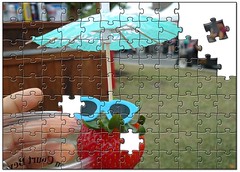On July 23rd, continuing the UMBC E-Teacher Scholarship Program, we formally started our workshops. I say formally because all of us in the program realized that in the last three days we have been part of a big informal workshop. In the lines below I will try to integrate my perceptions of this whole experience and how the situations we have been through and the interactions we had illustrate concepts related to Intercultural communication.
First, one of the things that Dr. Schwartz showed on his entertaining lecture was that when it comes to communication, we are not any different from our students, and as such we have a drive to communicate and make the uniqueness of our identities perceived. So, as we strolled down streets, went shopping, ate together at The Grits and in restaurants, we were having conversations and expressing our cultural identities through communication. Communication is not restricted to words only, it includes our gestures, the way we dress, and even our silences and pauses. Although we all might claim we teach English, what we really teach is communication.
Once we realize how important communication is, we have to start reflecting on the role that culture plays in communication to be aware of two very important aspects of culture: macro and micro culture. In our interactions with the scholars in the program, the coordinators, and program assistants, while we were striving to memorize names and countries the most salient aspect of their and our identities was the macro culture. Every time we introduced ourselves to the cafeteria staff we tried to snow our macro culture badge. Our macro culture IDs work as an ice breaker and makes communication flow. Macro culture is helpful for small talks and to help us to place people on a map (as we did when we were introducing ourselves and pinning the world map with colored post it notes).
While our macro culture is an important badge or hat to identify us and put a pin in the world map, our micro culture is the one that differentiates and defines us in a unique way. In these three days we have been here we were all lucky to have more meaningful interactions with som e of our peers and express a bit of our uniqueness. In these occasions we talked about our ethnic groups, our marital status, our preferences concerning food and dressing. These were moments that we treasured because they gave us a chance to stop being just a pin on the world map. Our micro culture is what helps us to form more meaningful relationships and break the mold of stereotypes that are many times attributed to our macro culture identities.
Although it seems fascinating to think, talk, and write about this dance of cultural identities, we should take into account that conflicts arise. When different cultures meet, at first everything seems to be a bed of roses. This is true especially if it is long awaited encounter, as is our case. This cultural honeymoon also lasts longer when you already know a lot about the target culture or are otherwise under the spell of the fascination of discovery. However, as time goes by and you start experiencing frustrations due to unmet expectations, difficulties to achieve very basic goals, and other difficulties. As a result of such frustrations a relationship with a person or country (a culture) goes stale - culture shock. Symptoms of culture shock can be subtle such as criticism of aspects of host culture such as food or way of dressing. Other times culture shock can cause depression and a total refusal of further interaction with the target culture. Hopefully all of us are just in this minor state of culture shock (the fun crab feast) and under the spell of discovery. So, let's hope it continues like that, but if we happen to be victims of such cultural experience we know there are friends we can count on.
Finally, we have also learned from Dr. Schwartz culture shocks are not a privilege of those traveling abroad. Culture shocks happen within the walls of our schools and classerooms and we have to be aware of them. However, awareness only is not enough. As educators, we should design activities that do not only allow students to express their macro and micro cultures, but that also makes them aware of differences and conflict and teach them strategies to deal with them.

No comments:
Post a Comment